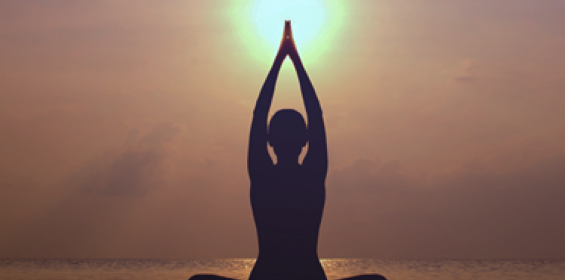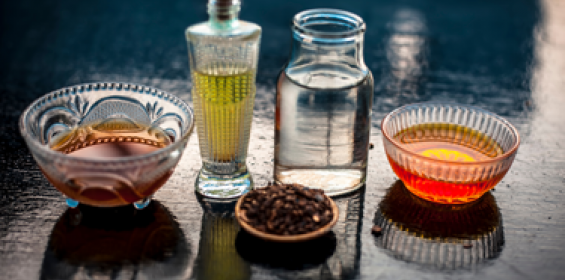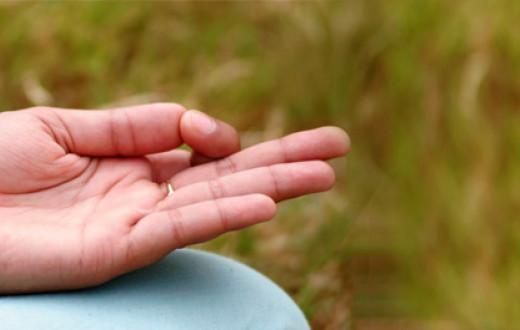Ayurveda and exercise - part 2
“Excuse me if I seem a little low energy tonight — today — whatever this is. I slept with my head to the North last night. Oh man! Oh man! You know how that is, right kids? Woke up right in the middle of pitta and couldn’t get back to sleep till Vata rolled around, but I didn’t freak out. I used that time to eat a large meal and connect with someone special on Tinder.
— Jim Carrey’s address to students at a Commencement Speech
We usually don’t speak like this, but what if our conversations actually included such lines?
“Excuse me, if I seem a little spacey or sensitive right now. It’s just that my vata is a little out of control!” What if we chose to look at people as an amalgam of their natural elements, and therefore could have a reason to behave in a certain manner? And coming back to vata, they might be spacey when imbalanced. However are vibrant, compassionate, energetic, and very loving when resting in their true nature.

Join a Free workshop on Yoga, Meditation and Breath
The vibrant ones
Here are a few vata-pacifying exercise guidelines:
1. Since vata people tend to be a little flighty, it’s best to practice an exercise regime that is stabilizing and relaxing. It’s best for vata people to avoid overexertion. Connecting with the earth element can be very relaxing for this wind element. Hence, follow a regime that involves:
- lying down on the earth or on the ground
- practicing yoga barefoot
- exercising outdoors
- ending your practice with savasana
“Tatra ruksho laghu sheetah, khara sukshmaschalo nilah”
The qualities of Vata are dry, light, cool, rough, subtle, and mobile.
- Ashtanga Hrdayam: Sutrasthana I:11

2. Since vata people tend to be on the move all the time, rest and rejuvenate during exercise times. Movements which are fluid, slow and smooth are encouraged (eg: yoga, tai-chi). It’s important to find activities that are stress-releasing, since a vata person will tend to worry and stress in their daily lives. A high sense of commitment, vata people will not hesitate to multi-task or push themselves to the limit - just to complete a task. So, be mindful of including mindfulness in your exercise regime. Of course, pump up the adrenalin - but not too much. And always, always end with savasana.
3. Since vata people tend to store their tension, and constrict from inside, release is important. Warm up through stretches. Use the power of the breath during your exercise or warm-up, and take relaxing breaths. Even if you decide to go on a long-distance run.

4. Vata people have high energy and low stamina. To avoid losing strength quickly, practice strength-building activities. This will help to preserve healthy muscle tissue.
5. Vata people usually find the kapha time of the day (6-10 am / pm) comforting. Kapha is a good antidote to vata’s natural tendency to do it all at one time.
6. Rest is essential for a person with vata predominance. Consider taking a day off if you’re a committed exerciser.
- Ashtanga Hrdayam: Sutrasthana: II: 8-9
7. Embrace oils in daily life. Their heavy, smooth nature stabilizes the vata element. Practice self-massage (abhyanga) on a daily basis. Apply a little oil on the scalp and feet before going to bed. It will calm the nervous system and support better sleep. Apply nasya oil to the nasal passages. Pay attention to the joints since high vata can lead to body aches, with the joints being most vulnerable. Rotate the joints before and after exercise. Gently massage the knees and elbows.
|
Vata-pacifying exercise |
|
| Type of exercise |
Should be rhythmic and moderate. Some examples:Aerobics (low-impact or dance) Badminton |
|
Suryanamskara |
Slow rhythmic suryanamskara |
| Yoga rules |
The vata sthana being below the navel, the asanas that support low back, intestines, the urogenital system helps to balance vata. |
|
These asanas should help to bring down fear, worry, and anxiety and also improve vata imbalances like constipation, lower back pain, joint pains, urinary disorders etc. |
|
|
Most yoga asanas are good for balancing vata, since most asanas are calming to the mind. But many strenuous ones should be avoided. |
|
| Yoga postures |
Purvottanasana, |
| Prayanamas |
Naadi shodhan |
8. It’s best to keep time aside for relaxation. A vata person will want to achieve it all and do a thousand things at the same time. Since that will stress and strain the nervous system, it’s important to meditate and relax. Keep time aside to slow down if things are too fast-paced. Don’t worry, a vata person will not come be complacent by taking a break.

Vata persons could often start exercise enthusiastically, yet tire out quickly. Not only because of the natural tendency of low stamina, but also because they could get bored easily. Remember to keep up with the commitment, while continuing to be your natural enthusiastic self.
With inputs from Dr. Sharika Menon, Ayurvadiya, Sri Sri Ayurveda
This is the fourth part in the series on Ayurveda and exercise. You can read the first, third and fourth parts here.
It’s always best to consult a certified Ayurveda doctor for detailed advice based on your body type. You could connect with the Sri Sri Ayurveda team to get a full body profile and avail of the Panchakarma facilities. Combine Ayurveda with the Sri Sri Yoga program and learn more about your body and mind.




































